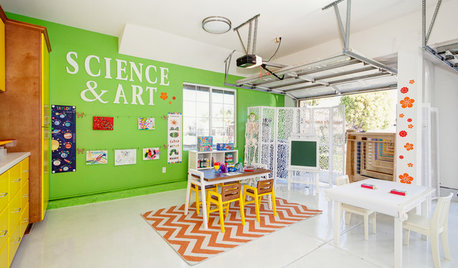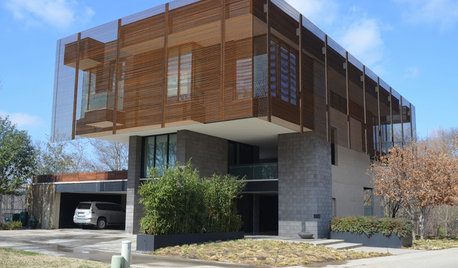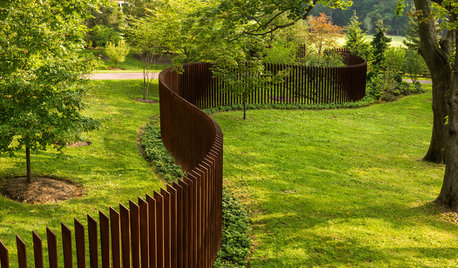Music and Plants Science Projects; a different approach?
albert_135 39.17°N 119.76°W 4695ft.
22 years ago
Related Stories

ROOM OF THE DAYRoom of the Day: Art and Science Room Proves Grandmas Are the Best
This grandmother transformed her garage into a science and art classroom where messes are encouraged every day
Full Story
EVENTSOn Show: Weird, Wondrous Science Meets Design
Houses grown, not built. Power-generating soil. And snail poop that ... well, see for yourself in our coverage of a new Rotterdam exhibit
Full Story
DECORATING GUIDES16 Lounges Go Wild for Science at San Francisco's Exploratorium
See the imaginative designs concocted and let us know which style formula works best for you
Full Story
HOUZZ TOURSMy Houzz: A Modern Approach to Efficient Living in Dallas
Energy efficiency, water conservation and resilient materials are key to this home in a Texas development
Full Story
FEEL-GOOD HOMEInherited Pieces: Embrace the Approach That Works for You
How you remember and honor loved ones through heirlooms is your decision alone
Full Story
HOLIDAYSNaturally Festive: An Organic Approach to Holiday Decorating
Give your home a look of pure comfort and joy this season with natural materials in a neutral palette
Full Story
ROOTS OF STYLEArt Deco, Art Nouveau, Arts and Crafts: What’s the Difference?
If the zigzag and swirly designs of the past leave your head spinning, these descriptions will straighten you right out
Full Story
FENCES AND GATES12 Delightfully Different Garden Walls and Fences
If pickets seem picked over and you shrink from chain link, try these full-of-personality fencing alternatives
Full Story
LANDSCAPE DESIGNThe 7 Best Plant Types for Creating Privacy and How to Use Them
Follow these tips for using different kinds of plants as living privacy screens
Full Story
ECLECTIC HOMESMy Houzz: Music and Eclectic Finds Rock a Family’s Los Angeles Hideaway
See how a creative couple thoughtfully curates their hilltop home perched in L.A.’s Laurel Canyon
Full Story





digging
albert_135 39.17°N 119.76°W 4695ft.Original Author
Related Professionals
Tempe Landscape Contractors · Kearny Landscape Contractors · Mastic Beach Landscape Contractors · South Lyon Landscape Contractors · Tehachapi Landscape Contractors · Waipahu Landscape Contractors · Chicago Ridge Landscape Contractors · Cedar Falls Decks, Patios & Outdoor Enclosures · Crystal Lake Decks, Patios & Outdoor Enclosures · Rancho Palos Verdes Decks, Patios & Outdoor Enclosures · Albuquerque Siding & Exteriors · Framingham Siding & Exteriors · Sacramento Siding & Exteriors · St. Louis Siding & Exteriors · Woodbridge Siding & Exteriorsdchall_san_antonio
albert_135 39.17°N 119.76°W 4695ft.Original Author
shakaho
albert_135 39.17°N 119.76°W 4695ft.Original Author
albert_135 39.17°N 119.76°W 4695ft.Original Author
shakaho
manifoldsky
manifoldsky
asciencestudent
davedilley_rocketmail_com